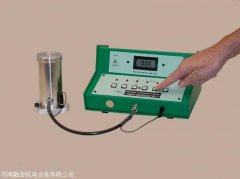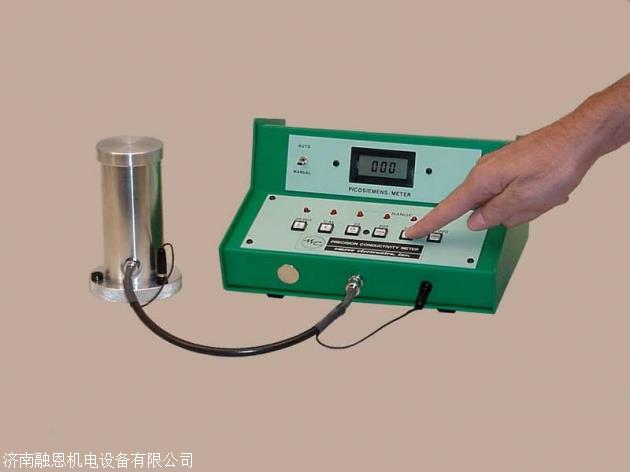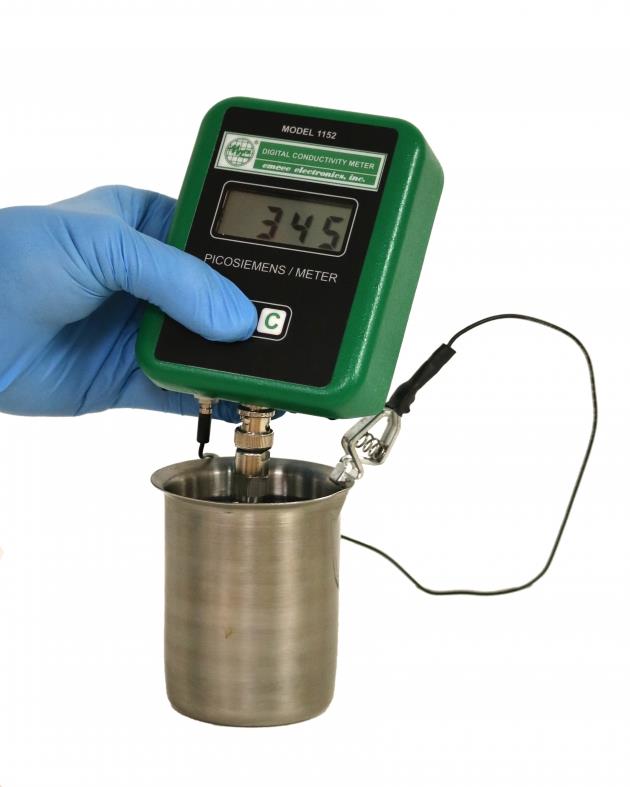-
-
EMCEE電導率儀/10/12 EMCEE精密電導率儀-燃油數字電導率儀
檢測測量
概要:
四個(gè)标準範圍提供高(gāo)分(fēn)辨率和(hé)精确的(de)液體電導率直接測量,從每米0.01到20萬微微歐(pS/m) 能夠被修改以提供更高(gāo)的(de)導電範圍 測量樣品溫度的(de)可(kě)選能力 傳導性(KSLA)電池的(de)機械設計允



檢測測量
概要:
四個(gè)标準範圍提供高(gāo)分(fēn)辨率和(hé)精确的(de)液體電導率直接測量,從每米0.01到20萬微微歐(pS/m) 能夠被修改以提供更高(gāo)的(de)導電範圍 測量樣品溫度的(de)可(kě)選能力 傳導性(KSLA)電池的(de)機械設計允
四個(gè)标準範圍提供高(gāo)分(fēn)辨率和(hé)精确的(de)液體電導率直接測量,從每米0.01到20萬微微歐(pS/m)
能夠被修改以提供更高(gāo)的(de)導電範圍
測量樣品溫度的(de)可(kě)選能力
傳導性(KSLA)電池的(de)機械設計允許對(duì)測試樣品體積(100毫升)進行精确的(de)自我測量
電子線路自動采集并保持讀數
大(dà)五位液晶顯示器
所有電子電路的(de)内部自檢校準
易于拆卸和(hé)清潔導電電池
完全獨立,由6個(gè)标準9伏電池供電,由低電量指示器監控

應用(yòng)
許多(duō)應用(yòng)要求對(duì)流體的(de)“靜止”電導率進行高(gāo)精度測量,測量範圍從小于1 pS/m到幾千pS/m不等。“剩餘”導電率是在電極間施加直流電壓(在沒有離子耗盡或極化(huà)的(de)情況下(xià),不帶電流體的(de)電阻的(de)倒數)後,電流測量初始瞬間的(de)導電率。精密電導率儀最初設計用(yòng)于精确測量碳氫燃料的(de)電導率。限制因素是流體的(de)粘度和(hé)要測量的(de)電導率水(shuǐ)平。但是,可(kě)以測量其他(tā)液體的(de)電導率,并且/或者可(kě)以由Emcee修改儀器的(de)範圍,以适應比所提供的(de)标準更高(gāo)的(de)電導率值。
操作理(lǐ)論
在電池的(de)兩個(gè)同心電極之間引入比體積(100毫升)的(de)試樣。使用(yòng)三軸電纜,電池連接到控制台中的(de)敏感直流電流表,并在兩個(gè)電極之間施加直流電壓。由于電池的(de)物(wù)理(lǐ)幾何結構,電池常數是穩定的(de)和(hé)可(kě)計算(suàn)的(de)。因此,合成的(de)峰值電流很容易被轉換,并以每米微微西門(pS/m)的(de)形式進行數字顯示,也(yě)稱爲電導單位(CU)。如ASTM标準試驗方法D 4308中所定義,銅等于每米一皮西敏(1銅=1 pS/m)。電池采用(yòng)的(de)封閉技術排除了(le)雜(zá)散電場(chǎng)對(duì)外部屏蔽的(de)需要。
EMCEE專用(yòng)注射器840-99- 5944專用(yòng)注射暑
EMCEE注射器貨号840-99- 5944注射器
EMCEE注射器840-99-5944注射器
EMCEE移液器001-90-5983移液器
EMCEE消耗包840-99-5944 3box消耗包
EMCEE微型分(fēn)離器六包840-99-5944微型分(fēn)離器六包
EMCEE套包840-99-5944套包
EMCEE水(shuǐ)分(fēn)離注射器840-99-5944水(shuǐ)分(fēn)離注射器
EMCEE水(shuǐ)分(fēn)離注射器840995944水(shuǐ)分(fēn)離注射器
EMCEE水(shuǐ)分(fēn)離指數注射器840-99-5....水(shuǐ)分(fēn)離指數注射
EMCEE水(shuǐ)分(fēn)離指數儀水(shuǐ)分(fēn)離指數儀
EMCEE水(shuǐ)分(fēn)離指數儀 ..水(shuǐ)分(fēn)離指數儀
EMCEE水(shuǐ)分(fēn)離指數測試六件套840-..水(shuǐ)分(fēn)離指數測試...
EMCEE水(shuǐ)分(fēn)離指數測定儀140-00-0...水(shuǐ)分(fēn)離指數測定...
EMCEE連接件001-90-7903 9-09....連接件
EMCEE聚結器840- 99 - 5946聚結器
EMCEE數字電導率儀探頭BX4-115....數字電 導率儀探..
EMCEE燃油數字電導率儀153-00-0...燃油數字電導率..
EMCEE電導率儀電導率儀
EMCEE電導率儀電導率儀
EMCEE電導率儀-20....電導率儀
EMCEE傳感器傳感器
EMCEE測試儀 MODEL..測試儀
Four standard ranges provide high resolution and accurate direct measurement of electrical conductivity of fluids from.01 to 200,000 picosiemens per meter (pS/m)
Capable of being modified to provide higher conductivity ranges
Optional capability to measure sample temperature
Mechanical design of the Conductivity (KSLA) Cell allows accurate self measuring of the test sample volume (100 mL)
Electronic circuitry automatically samples and holds the reading
Large five digit liquid crystal display
Internal self check calibration of all electronic circuits
Ease of disassembly and cleaning of the Conductivity Cell
Completely self contained powered by 6 standard 9 volt batteries monitored by a low battery indicator
Applications

Many applications require highly accurate “rest” electrical conductivity measurements of fluids ranging in values from less than one pS/m to several thousand. “Rest” conductivity is the electrical conductivity at the initial instant of current measurement after a dc voltage is impressed between electrodes (reciprocal of the resistance of uncharged fluid in the absence of ionic depletion or polarization). The Precision Conductivity Meter was originally designed to precisely measure the conductivity of hydrocarbon fuels only. Limiting factors are the viscosity of the fluid and the conductivity level to be measured. However, electrical conductivity of other fluids can be measured and/or ranges of the instrument can be modified by Emcee to accommodate higher conductivity values than the standards offered.
Theory of Operation
A specific volume (100-mL) of test sample is introduced between the two concentric electrodes in the Cell. Using a triaxial cable, the Cell is connected to a sensitive dc ammeter in the Console and a dc voltage is applied between the two electrodes. Due to the physical geometry of the Cell, the Cell constant is stable and calculable. Thus, the resultant peak current is readily transformed and digitally displayed as picosiemens per meter (pS/m), also commonly known as conductivity units (CU). As defined in ASTM Standard Test Method D 4308, a CU is equal to a picosiemen per meter (1 CU = 1 pS/m). The enclosure technique employed in the Cell precludes the need for external screening from stray electrical fields.